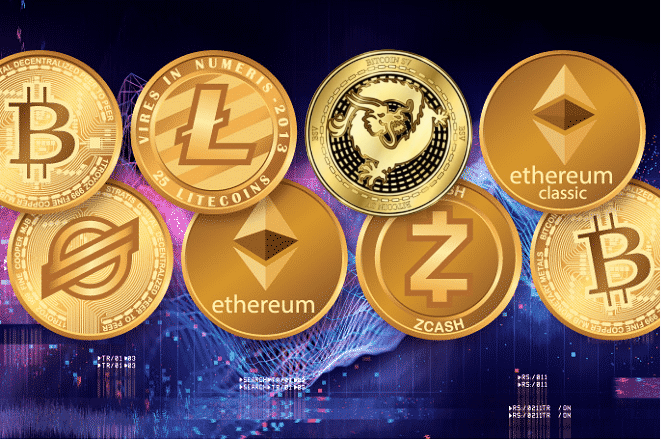The Beginner’s Guide to DeFi Understanding Decentralized Finance
Explore the evolving landscape of decentralized finance (DeFi) and learn how to navigate the complexities of cryptocurrency investing with confidence.

Decentralized finance, commonly referred to as DeFi, is revolutionizing the way we think about financial services by utilizing blockchain technology to create a more open and accessible financial ecosystem. Unlike traditional finance, which relies on intermediaries such as banks and brokers, DeFi enables direct peer-to-peer transactions, allowing users to engage in a variety of financial activities without the need for centralized control.
Key Concepts of DeFi
-
Direct Transactions: DeFi facilitates transactions directly between users, eliminating the need for banks or other intermediaries, which can lead to lower fees and faster processing times.
-
Blockchain Foundation: Built on blockchain technology, DeFi ensures that all transactions are transparent, secure, and immutable, providing users with greater trust in the system.
-
Open Access: One of the most significant advantages of DeFi is its accessibility. Anyone with an internet connection can participate in DeFi services, making financial tools available to a broader audience.
-
Diverse Financial Services: DeFi encompasses a wide range of services, including lending, borrowing, trading, and earning interest on digital assets, all without the barriers typically associated with traditional banking.
Getting Started with DeFi
-
Familiarize Yourself with Tokens and Protocols: Understanding the various tokens and protocols within the DeFi space is crucial for navigating this new financial landscape.
-
Select a Reliable Platform: Choose a reputable DeFi platform that aligns with your investment goals and risk tolerance.
-
Prioritize Security: With the rise of DeFi, security is paramount. Use wallets and platforms that implement strong security measures to safeguard your assets.
DeFi is transforming the financial industry by offering innovative solutions that empower users worldwide. As this sector continues to grow and evolve, it’s essential for individuals to educate themselves about the opportunities and risks associated with decentralized finance. Embracing this change can lead to a more inclusive and efficient financial future.
Components of DeFi
-
Smart Contracts:
At the heart of DeFi are smart contracts—self-executing contracts with the terms of the agreement directly written into code. These contracts automate processes and transactions, reducing the need for intermediaries and minimizing the risk of human error. -
Decentralized Applications (dApps):
DeFi operates through decentralized applications (dApps) built on blockchain platforms like Ethereum. These applications offer various financial services, from decentralized exchanges (DEXs) to lending platforms, all without a central authority. -
Liquidity Pools:
Liquidity pools are collections of funds locked in smart contracts that provide liquidity for trading on decentralized exchanges. Users can contribute to these pools and earn rewards, often in the form of transaction fees or interest. -
Yield Farming and Staking:
Yield farming involves lending or staking cryptocurrencies in return for interest or rewards, while staking typically involves locking up tokens to support network operations in exchange for rewards. Both methods allow users to earn passive income from their digital assets.
Benefits of DeFi
-
Lower Costs:
By removing intermediaries, DeFi can significantly reduce transaction fees and costs associated with financial services. -
Global Accessibility:
DeFi platforms are accessible to anyone with an internet connection, offering financial services to unbanked populations and those in regions with limited access to traditional banking. -
Transparency:
All transactions on the blockchain are publicly recorded, providing a level of transparency that is often lacking in traditional finance. -
Innovation:
The DeFi space is rapidly evolving, with new protocols and applications emerging regularly, fostering innovation and competition.
Risks and Challenges
-
Smart Contract Vulnerabilities:
While smart contracts automate processes, they are not immune to bugs and vulnerabilities. Exploits can lead to significant financial losses. -
Market Volatility:
The cryptocurrency market is known for its volatility. Prices can fluctuate dramatically, impacting the value of assets held in DeFi platforms. -
Regulatory Uncertainty:
As DeFi grows, regulatory scrutiny is increasing. Uncertain regulations can pose risks for users and developers alike. -
User Error:
DeFi often requires users to manage their own private keys and wallets. Mistakes in handling these can lead to irreversible loss of funds.
The Future of DeFi
The future of decentralized finance is promising, with ongoing developments aimed at improving security, scalability, and user experience. As more individuals and institutions recognize the benefits of DeFi, we can expect:
-
Integration with Traditional Finance:
Traditional financial institutions may begin to adopt DeFi technologies, leading to hybrid models that combine the best of both worlds. -
Enhanced User Interfaces:
As DeFi matures, we can anticipate more user-friendly interfaces, making it easier for newcomers to navigate the space. -
Interoperability:
Future DeFi protocols may focus on interoperability, allowing different platforms to communicate and share liquidity seamlessly. -
Increased Regulation:
As the DeFi sector grows, regulatory frameworks will likely evolve to provide clearer guidelines, enhancing user protection while fostering innovation.
What's Your Reaction?













